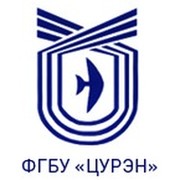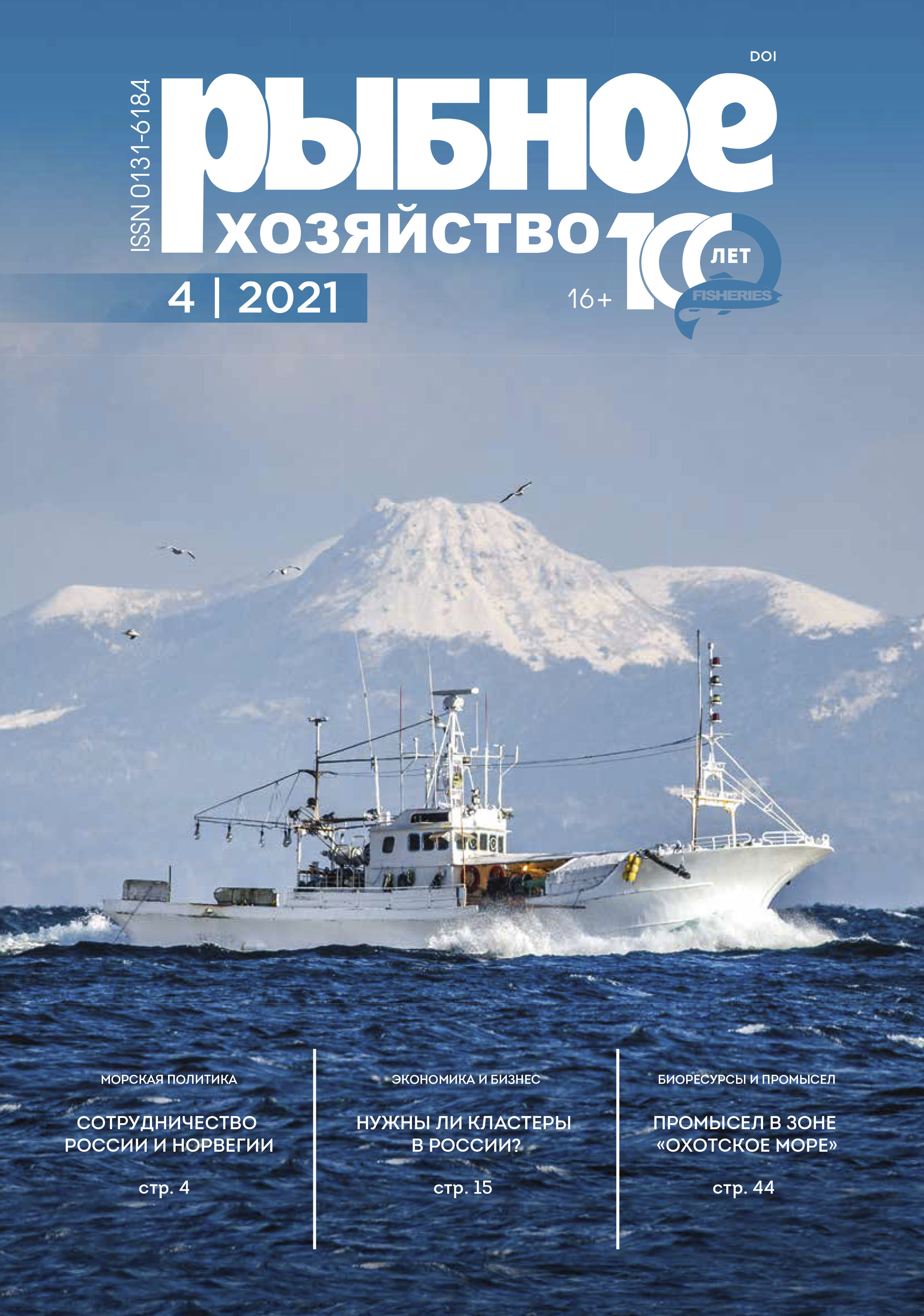Russian Federation
from 01.09.2008 until now
Russian Federal Research Institute Of Fisheries and Oceanography (VNIRO) (Senior Researcher)
Moscow, Russian Federation
Russian Federation
Russian Federation
UDC 63
CSCSTI 69.51
Russian Classification of Professions by Education 110000
Russian Classification of Professions by Education 35.03.08
Russian Classification of Professions by Education 35.02.10
Russian Library and Bibliographic Classification 472
Comparative studies of the content of total nitrogen of volatile bases (ALO) in fish raw materials, as an objective indicator of quality, were carried out by direct distillation of the sample and by distillation of acid extract. It was found that the method based on direct distillation of the sample results in 25-30% higher values than the method of acid extract distillation due to alkaline hydrolysis of the sample protein. A comparison of the reproducibility of the two methods using the Fisher statistical criterion showed the heterogeneity of the variances and the impossibility of attributing them to a single general population. For the gradation of the quality of fish raw materials, the method of distilling acid extract is recommended. The objects of three different categories are studied, grouped according to the proposed three degrees of quality, based on the maximum permissible levels of nitrogen content of volatile bases. The reliability of the results is shown and a conclusion is made about the use of the ALO content as an indicator characterizing both the initial state of fish raw materials and the dynamics of the storage process and the establishment of the moment of spoilage. A method for measuring the mass fraction of total nitrogen of volatile bases has been developed and certified (certificate of certification No. 0168/ROSS RU.0001.310430/2020).
TVB-N, distillation, acid extract, fish products, spoilage index
1. Abramova L. S., Kozin, A. V., A. L. Pogrebinska 1. Abramova L. S. Methods of quality assessment of fish production / L. S. Abramov, A. V. Kozina, A. L. Pogrebinska // Quality Control of products - 2018. - No. 6. - P. 25-31.
2. HowgateP. A critical review of total volatile bases and trimethylamine as indices of freshness of fish. Part 2. Formation of the bases, and application in quality assurance // Electron. J. Environ., Agric. Food Chem. - 2010. - V.9. - Pp. 58-88.
3. Jinadasa B.K.K.K. Determination of quality of marine fishes based on total volatile base nitrogen test (TVB-N) //Nat. Sci. - 2014. - V.12(5). - Pp.106-111.
4. Malle P., Poumeyrol M. A new chemical criterion for the quality control of fish; Trimethyl amine/Total volatile basic Nitrogen (%) // J. Food Protect. - 1989. - V. 52. - № 6. - P. 419-42.
5. Chytiri S., Chouliara I., Savvaidis I.N., Kontominas M.G.Microbiological, chemical and sensory assessment of iced whole and filleted aquacultured rainbow trout. // Food Microbiol. - 2004. - V.21. - Pp. 157-165.
6. Ninan G., Zynudheen A.A, Josep J. Effect of Chilling on Microbiological, Biochemical and Sensory Attributes of Whole Aquacultured Rainbow Trout (Oncorhynchus mykiss Walbaum, 1792)// J. Aquacult. Res. Dev. 2011.S5.
7. Rezaei M., Hosseini S.F. Quality Assessment of Farmed Rainbow Trout (Oncorhynchus mykiss) during Chilled Storage// J. Food Sci. - 2008. - Vol. 73. - №. 6. - Pp.93-96.
8. Özogul F., Özogul Y. Comparision of methods used for determination of total volatile basic nitrogen (TVB-N) in rainbow trout (Oncorhynchus mykiss) // Turk. J. Zool. - 2000. - V.24. - Pp.113-120.
9. Popelka P., Jevinova P., Marcincak S. Microbiological and chemical quality of fresh and frozen whole trout and trout fillets // Potravinarstvo Slovak J. Food Sci. - 2016. - V10 - №1. - Pp. 431-436.
10. Sotelo C. G., Gallardo J. M., Pineiro C. Perez-Martin R. Trimethylamine oxide and derived compounds' changes during frozen storage of hake (Merluccius merluccius// Food Chem. - 1995. - V.53. - №.1. - Pp.61-65.
11. Baixas-Nogueras S., Bover-Cid S., Veciana-Nogués M.T.,Carmen Vidal-Carou M. Effects of previous frozen storage on chemical, microbiological and sensory changes during chilled storage of Mediterranean hake (Merluccius merluccius) after thawing //Eur. Food Res. Technol. - 2007. - V.226. - Pp.287-293.
12. Orban E., Nevigato T., Di Lena G., Masci M., Casini I., Caproni R., Rampacci M.,Carmen Vidal-Carou M. Total volatile basic nitrogen and trimethylamine nitrogen levels during ice storage of European hake (Merluccius merluccius): A seasonal and size differentiation. //Food Chem. - 2011. - V.128. - №3. - Pp. 679-682.
13. Burns B.G., Ke P.J., Irvine B.B. Objective Procedure for Fish Freshness Evaluation Based on Nucleotide Changes Using a HPLC System. // Can. Tech. Rep. Fish. Aquat. Sci. - 1985. - №. 1373. - Pp.1-39.
14. Esaiassen M., Nilsen H., Joensen S., Skjerdal T., Carlehog M., Eilertsen G., Gundersen B., Evlevoll E. Effects of catching methods on quality changes during storage of cod (Gadus morhua // LWT- Food Sci. Technol. - 2004. - V.37. - №5. - Pp. 643-648.
15. Ruiz-Capillas C., Gillyon C.M., Horner W.F.A.Determination of different volatile base components as quality control indices in fish by official methods and flow injection analysis// J. Food Biochem. - 2001. - V 25 - №6. - Pp. 541-553.
16. Pivarnik L., Ellis P., Wang X., Reilly T. Standardization of the ammonia electrode method for evaluating seafood quality by correlation to sensory analysis// J. Food Sci. - 2001. - V 66. - №7. - Pp. 945-952.
17. Limbo S., Sinelli N., Torri L., Riva M.Freshness decay and shelf life predictive modelling of European sea bass (Dicentrarchus labrax) applying chemical methods and electronic nose // LWT - Food Sci. Technol. 2009. - V.42. - №5. - Pp. 977-984.
18. Mokrani D., Oumouna M., Cuesta A. Fish farming conditions affect to European sea bass (Dicentrarchus labrax L.) quality and shelf life during storage in ice. // Aquaculture. - 2018. - V.490. - Pp. 120-124.
19. Goulas A.E., Kontominas M.G. Effect of salting and smoking-method on the keeping quality of chub mackerel (Scomber japonicus): biochemical and sensory attributes // Food Chem. - 2005. - V.93. - Pp.511-520.
20. Azam K., Ali M.Y, Asaduzzaman M., Basher M.Z., Hossain M.M. Biochemical assessment of selected fresh fish.//J. Biol. Sci.2004. - V.4. - №1. - Pp. 9-10.
21. Calanche J, Pedrós S, Roncalés P, Beltrán JA. Design of Predictive Tools to Estimate Freshness Index in Farmed Sea Bream (Sparus aurata) Stored in Ice. // Foods. - 2020. - V.9(1). - P.69.
22. Shi L., Yin T., Wang L., Xiong G., Gao R., Ding A., Li X., Wu W., Qiao Y. U., Liao L. I., Jiao C. Effect of pre-chilling time on the physicochemical properties of channel catfish during frozen storage //Int. J.Refrig. - 2020. - V.115. - Pp.56-62.
23. Gormley T. R. Survey on fish freshness at retail level. // University College Dublin. School of Agriculture and Food Science. 2016. [Electronic resource]: https://researchrepository.ucd.ie/handle/10197/9509 (accessed 10.03.2021).
24. Commission Implementing Regulation (EU) 2019/627 of 15 March 2019 laying down uniform practical arrangements for the performance of official controls on products of animal origin intended for human consumption in accordance with Regulation (EU) 2017/625 of the European Parliament and of the Council and amending Commission Regulation (EC) № 2074/2005 as regards official controls // EUR-Lex. Access to European Union law [Electronic resource]: https:// eur-lex.europa.eu/legal-content/EN/TXT/PDF/?uri=CELEX:02019R0627-20190517&qid=1607501919274&from=EN (date of occurrence: 14.03.2021).
25. TR of the EAEU 040/2016. Technical Regulations of the Eurasian Economic Union "On the safety of fish and fish products". - M., 2016. - 126 p.
26. GB 2733-2015China National Standards. National food safety standard - Fresh and frozen marine products of animal origin. The Standardization Administration of the People's Republic of China. 2016. Beijing. China.
27. Conway E.J., Byrne A. An absorption apparatus for the micro-determination of certain volatile substances: The micro-determination of ammonia // Biochem J. - 1933. - V.27(2). - P.419-29.
28. Antonacopoulos N In: Acker I (Ed) Handbuch der Lebensmittelchemie, Bd III/2. Berlin: Springer Verlag. 1968. S. 1482.
29. FAO/WHO Method for the determination of total volatile basic nitrogen (TVB) in fish muscle. Presented to the Codex Committee on Fish and Fishery Products. 3rd session, Bergen (Norway) as Codex Fish 1/7. 1968.
30. GOST 7636-85. Fish, marine mammals, marine invertebrates and products of their processing. Methods of analysis - M., 1985. - 180 p.
31. GB 5009.228.China National Standards. National Food Safety Standard - Determination of Volatile Basic Nitrogen in Food. 2017.Beijing. China.
32. Vyncke W. Comparison of the official EC method for determination of total volatile bases in fish with routine methods. // Archiv für Lebensmittelhygiene. - 1996. - V.47. - Pp.110-112.
33. Maghraby O., Hassouba, M., El-Mossalami E. Effect of Methodology on the Determination of Total Volatile Basic Nitrogen as an Index of Quality of Meat and Fish. // Egypt.J.FoodSafety. - 2013. - V 1. - Pp.23-34.
34. Pil L.I. Determination of nitrogenous volatile bases in fish products. / L.I. Pil, L.I. Olkhovskaya, O.P. Mironova // News of higher educational institutions. Food technology. - 1998. - № 5-6 (246-247). - Pp. 85-87.
35. Clancy G.S., Beames R.M., Higgs D.A., Dosanjh B.SEffect of Methodology on the Determination of Total Volatile Nitrogen and Trimethylamine Levels in Previously Frozen Pacific Herring, Clupea Harengus Pallasi, Stored at 2-5C for Up to 15 Days // Can. Tech.Rep.Ser.Aquat.Sci.Rep. - 1995. - 2047. - P. 15.
36. Less V.R. Practical guide for the laboratory. Special methods. St. Petersburg: PSC "Profession", 2014. - 472 Pp.











